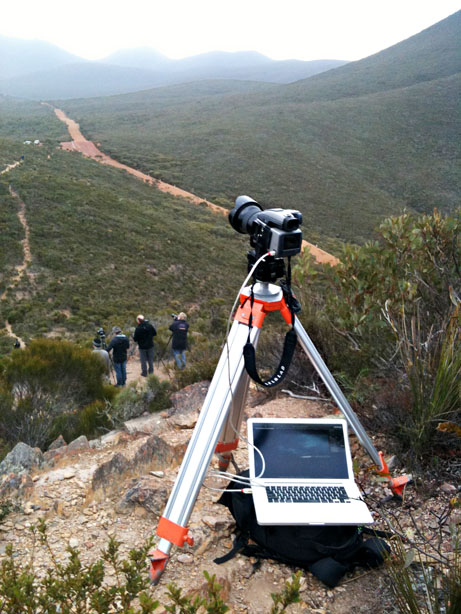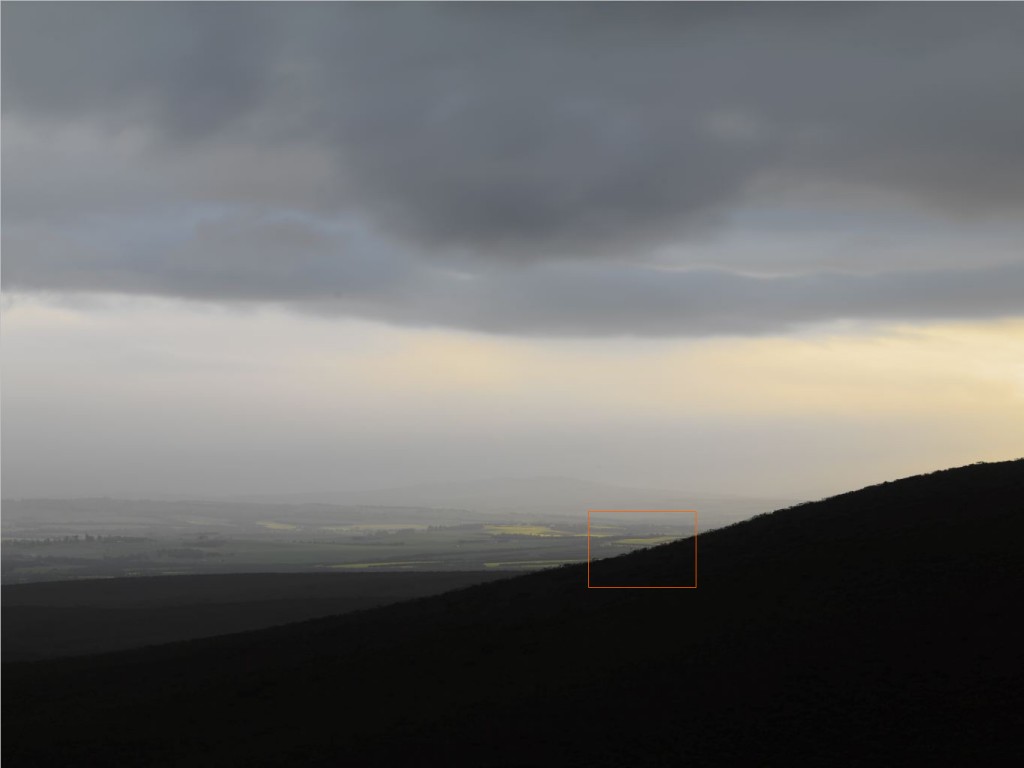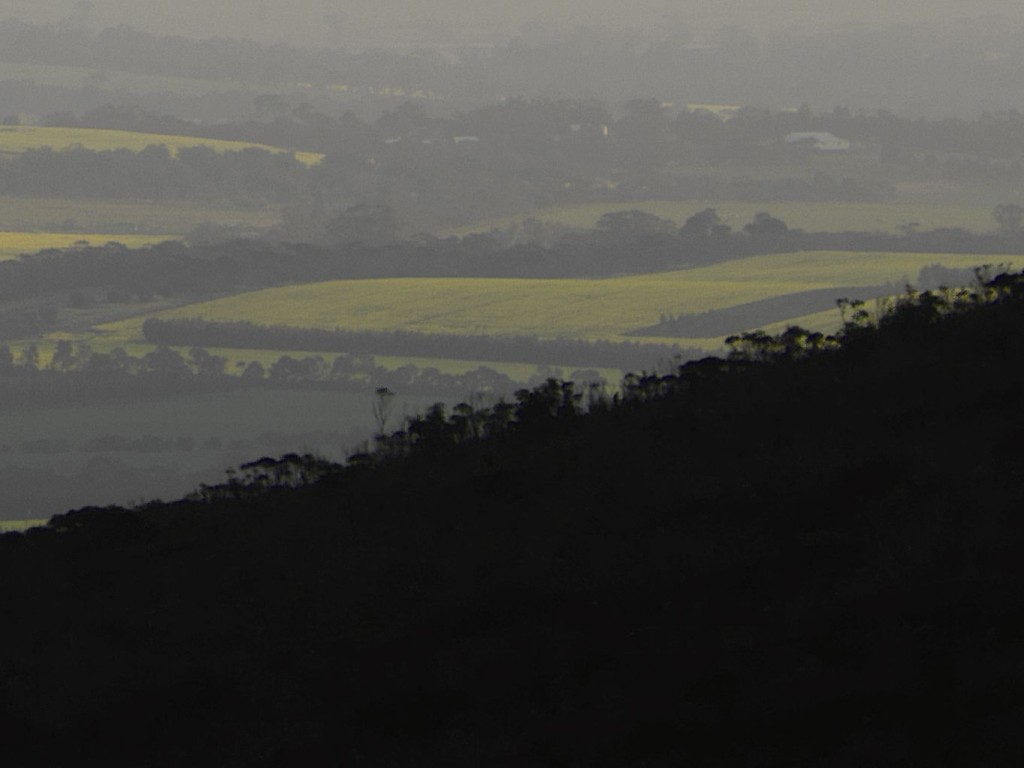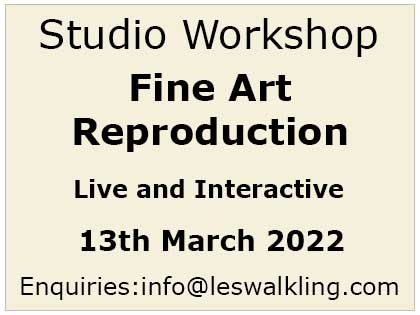In photography where we stand is as important as why we stand where we do. This perspective both draws (composition) and frames (ideology) our image.
Commencing a new project is always filled with trepidation, anticipation and proclamations. So it was that together with my ’90 Degrees 5′ collaborators Christian Fletcher, Michael Fletcher, Tony Hewitt, and Peter Eastway, along with our guest photographer Nick Rains, we commenced our South West Light project in September 2011. This project is a testimony to the significance of landscape in our lives, and the larger issues of our relationship to country, place and belonging. It is about the relationship between ourselves and the natural world, and evidence of our desire to live in harmony with our environment. If the ‘landscape’ is altered by our encounter with it, and through our changing relationship both metaphorically and physically, then our acts and actions are always accountable. They mean something.
If we also only respect what we understand, and only know what we encounter, our methodology, how we photograph, says much about our relationship to what we are photographing. My decision to tether the Hasselblad H4D-200MS camera in the field is a meditation on this. It begins by dividing the capture process into two parts: Seeing (Constructing) and Making (Interpreting), which also mirrors 19th Century processes like wet collodion photography where the camera once set up had to wait until the glass plate was coated and sensitised before it could realise the imagined image. A division of duty and purpose all but lost in digital translation. This was also about contemplating the act of photography, including an exploration of the attitudes and values not just the ways in which photographers respond to the world. Thus it provides the opportunity for a conversation about such matters and concerns.
At 200 megapixels the Hasselblad H4D-200MS translates the world of appearances into a 1.22GB RAW file and 16,338 x 12,259 pixels. An initial exposure is followed 1o seconds later by a series of six exposures over 20 seconds. Four of the six exposures see the sensor being moved one pixel at a time relative to the Bayer filter array, so that each pixel records the actual RGB values in the scene with the Green values being sampled at twice the frequency of the Red and Blue values. The 5th and 6th exposures record the Green values at the intersections of the 4-shot pixel matrix. That is, the sensor is moved half a pixel diagonally for the 5th and 6th exposures, with the missing Red and Blue values being interpolated from the true RGB values already recorded in the 4-shot matrix. This results in 200 mpx files of exquisite quality. On my Epson printer at 240 ppi a 6-shot file produces a 51 x 68 in (130 x 173cm) print. For the first time in my digital life I am downsizing not upsizing my files. This is also the luxury of real, not imaginary numbers and pixels.
This image of the Stirling Range in Western Australia was made with my Hasselblad H4D-200MS tethered in 6-shot mode. An enlargement to 100% reveals the extraordinary detail captured in this image despite the howling gale and shifting light patterns. Only the white balance and histogram’s white and black points have been adjusted in this rendering. There is no sharpening or other image enhancements.
Being able to count the branches on trees that I couldn’t see with my naked eyes is a revelation, and a powerful metaphor for our boundless embeddedness in the natural world. Beyond such nascent pursuits, the sheer eloquence and profound beauty of the rendered image simply takes my breath away.
Focus stacking multiple multi-shot captures can further reduce movement artefacts between the successive shots to an often acceptable level. I also make a 1-shot exposure at each plane of focus when there is obvious movement in the scene, such as moving water or people, and then combine the advantages of the 1-shot and multi-shot images in post processing. However in this image all objects were at such a distance from the sensor that their movement was not noticeable in the 6-shot file so no additional processing was required. The Hasselblad H4D-200MS is therefore three cameras in one; a single-shot 50 mpx camera, a 4-shot true RGB 50 mpx camera, and an exceptional ‘game-changing’ 200 mpx 6-shot camera.
When you stop to look closely at a photograph, a person or a place, you surrender the right to take it for granted. My Hasselblad H4D-200MS camera also surrenders the right to be indifferent or inconsequential. Cultures portray their own nature, and our constructions of nature bear the same relationship to the totality of the natural world as a photographer’s rendering does to the world before them. Nature has no say in this matter. We are the ones who breathe life into the idea of nature. It becomes a site of wonder and wondering, action and response. And so we create pictures, not as images that portray a likeness or a real place, but as experiences that embody the presence of being there. This appreciation translates my conscience into a conscious engagement with our environment, and enhances my understanding, empathy and compassion for all living systems, people and places.





{ 4 comments… read them below or add one }
I loved reading this Les, admittedly I had to read it over a couple of times for it to sink in!! You know what I’m like. Fantastic times we had and heres to more soon. Can’t wait to see a print from one of those files. It will be unbelievable.
Hi Les this is amazing yes I’m with Christian I had to read a couple of times as well!!
Talk soon
Les, loved reading the technical aspects about the capture but the last paragraph puts into words the feelings of being there.
Les. When layering a 1 shot capture onto a 4 or 6 shot capture do the two images register exactly pixel to pixel or do you have to manually move the 1 of the layers in PS to register them?
Thank you